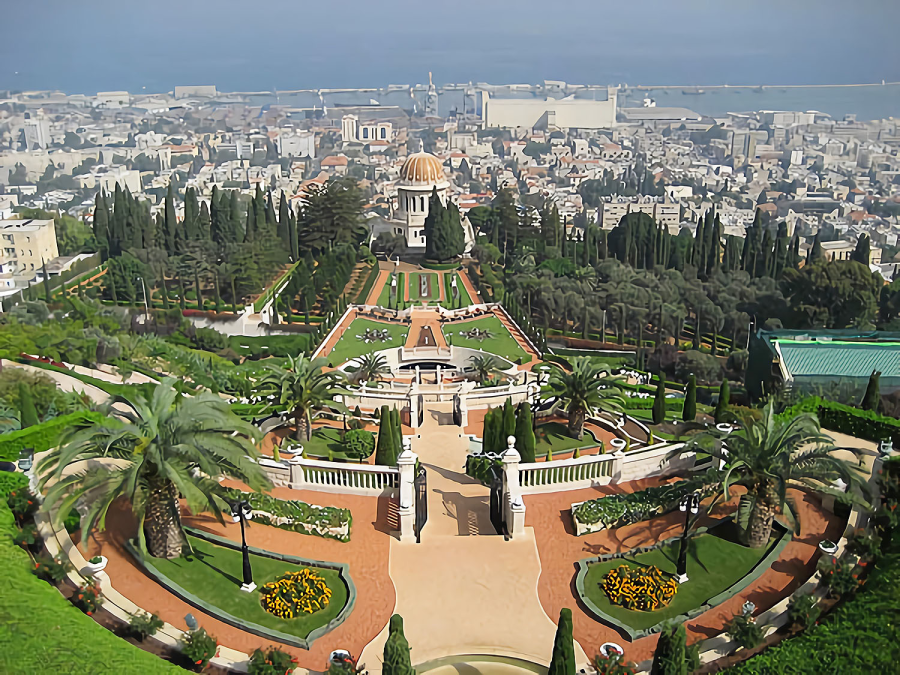The Baha’i gardens in Haifa
Attractions travel guideThe Baha’i gardens in Haifa are made up of nineteen tiered gardens (terraces) starting at the top of Mount Carmel and ending at its foot. The central axis around which the gardens were designed points towards Acre, a city of great historical and religious significance for the Bahá’ís. In the heart of the gardens stands the temple of the Báb with its golden dome, the resting place of the prophet-forerunner of the Bahá’í religion. The different parts of the gardens offer a variety of views and sensations, but all are united by a common language of gravel paths, designed shrubs and flower beds, which are nurtured and cared for by a dedicated team of gardeners. From the gardens there is a spectacular panoramic view of the city, the Galilee mountains and the Mediterranean Sea.
The Bahá’í Gardens are religious sites open to the general public free of charge. As is customary on sites of this type, visitors are asked to dress in modest clothing that covers the shoulders and reaches to the knees and without tears, to help keep the site clean and beautiful, and to behave in a manner that considers the sensitivities of others.
Dress Code:
Please wear clothes that cover the shoulders and reach to the knees and without tears. Due to the cobblestone paths and sidewalks that can be slippery, we recommend wearing comfortable shoes with good grip. In the summer months, we recommend wearing a hat and applying sunscreen.
Photography is allowed, except inside the temples.
Food and drinks
Visitors are encouraged to bring bottles of water with them. Drinking other beverages, eating food, chewing gum, and smoking are prohibited in the gardens.
Main entrance
Sderot Zion 80
048313131








